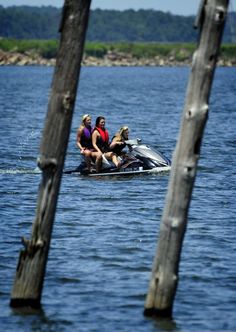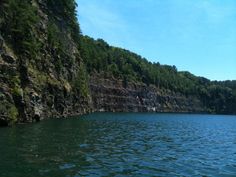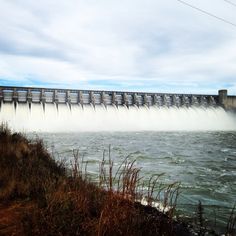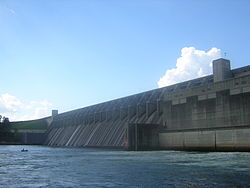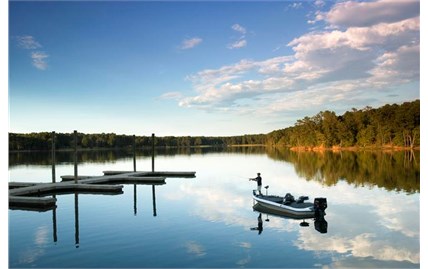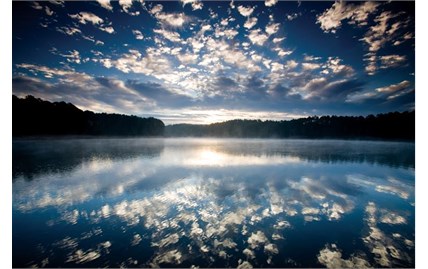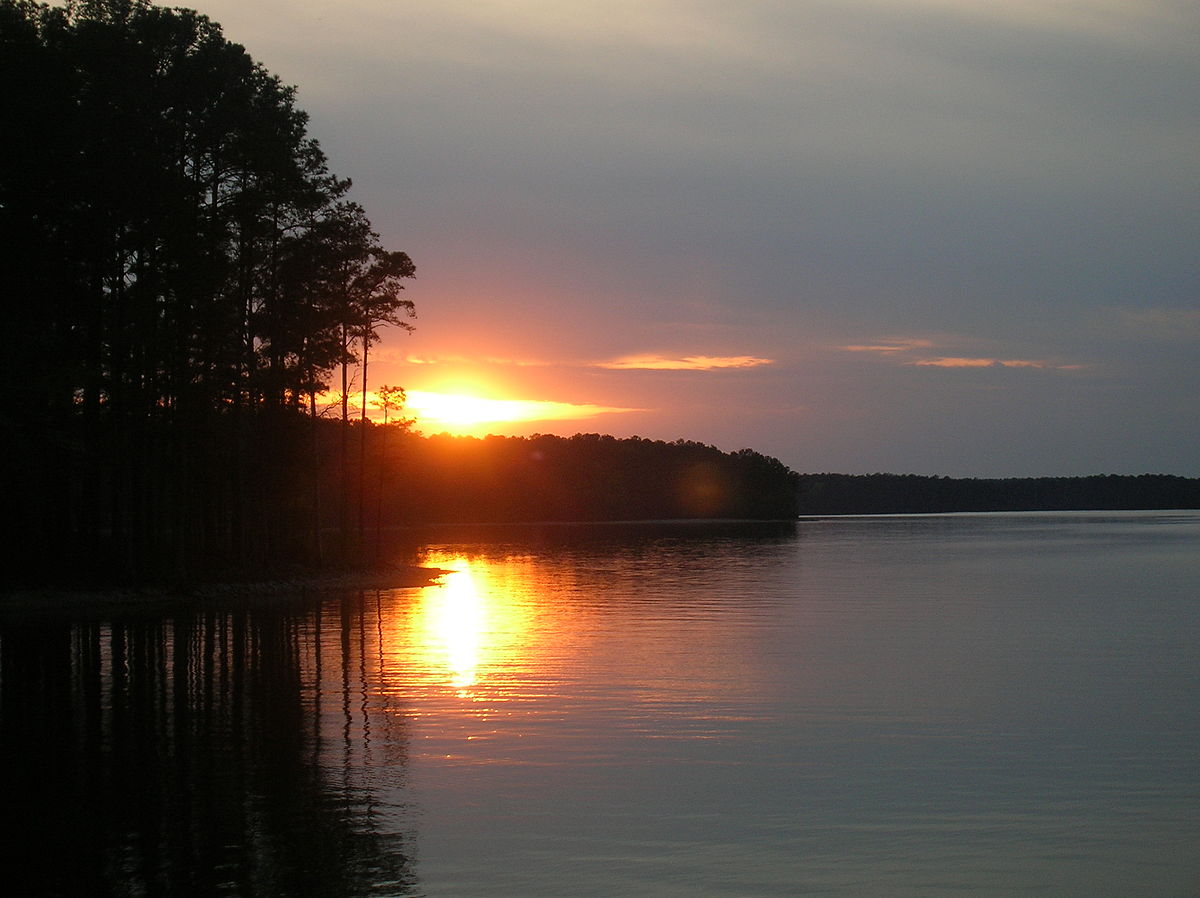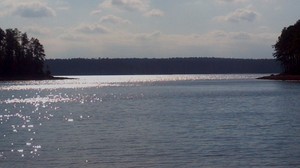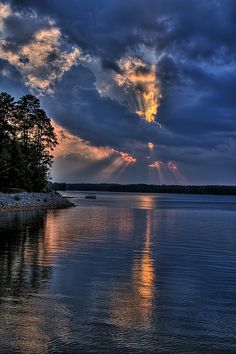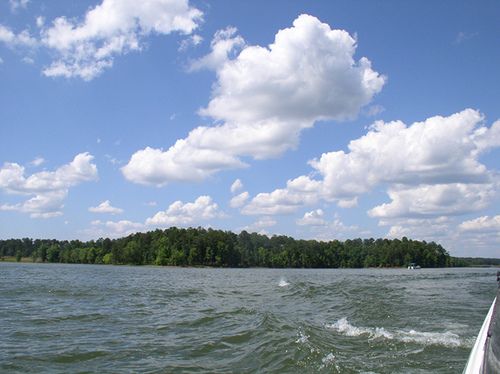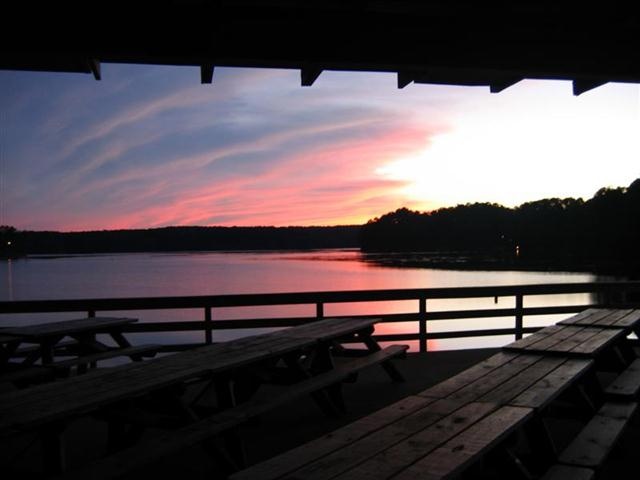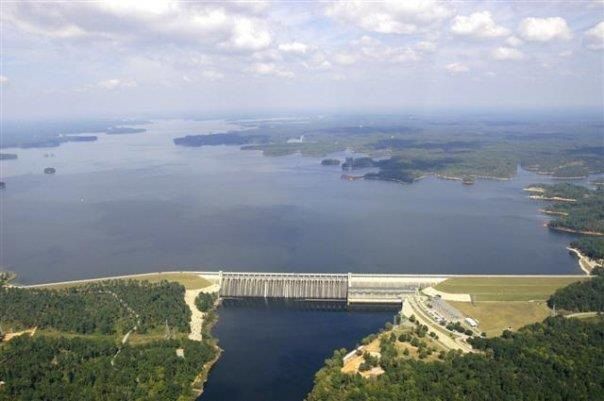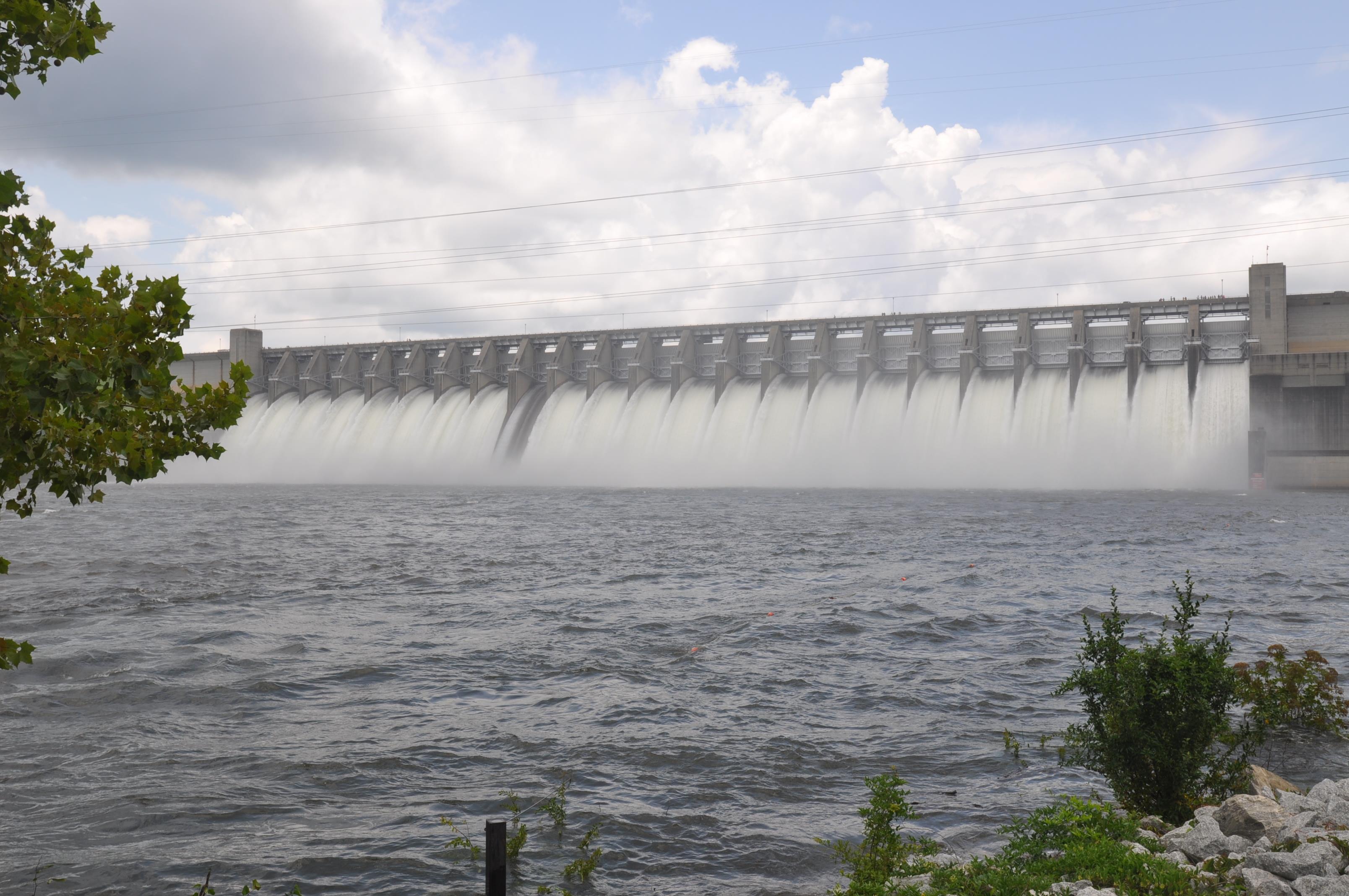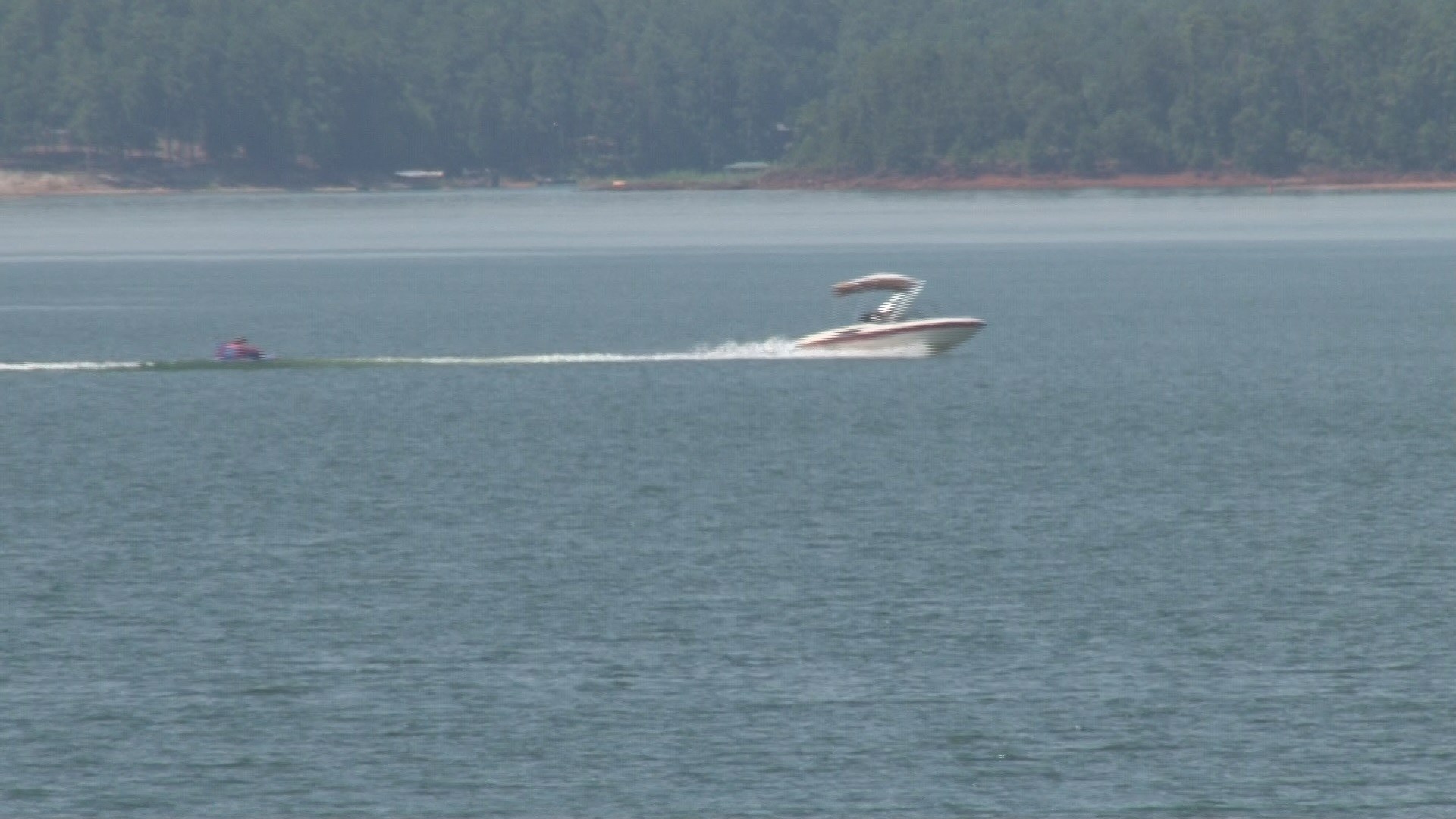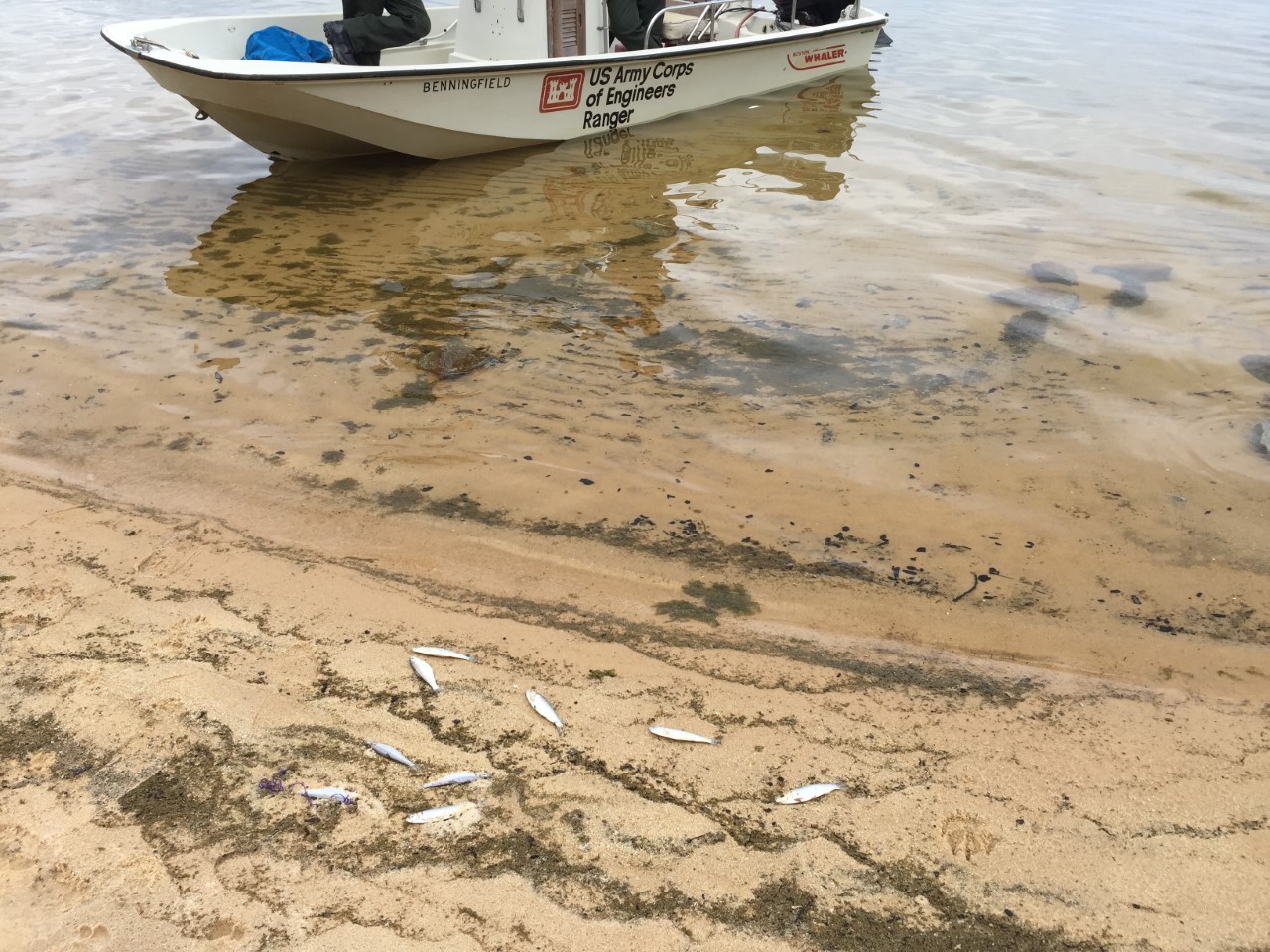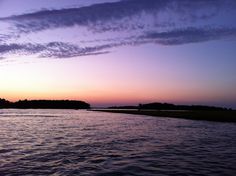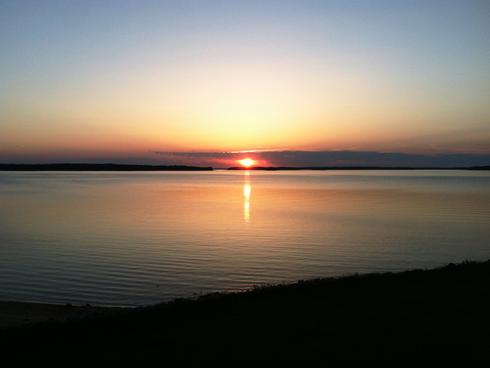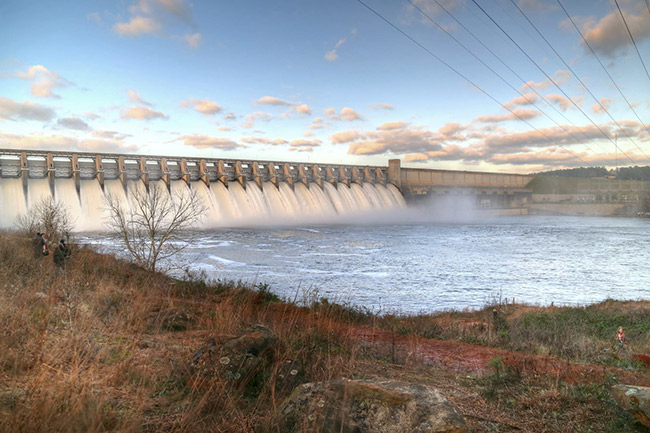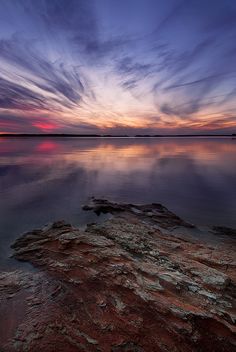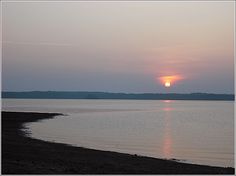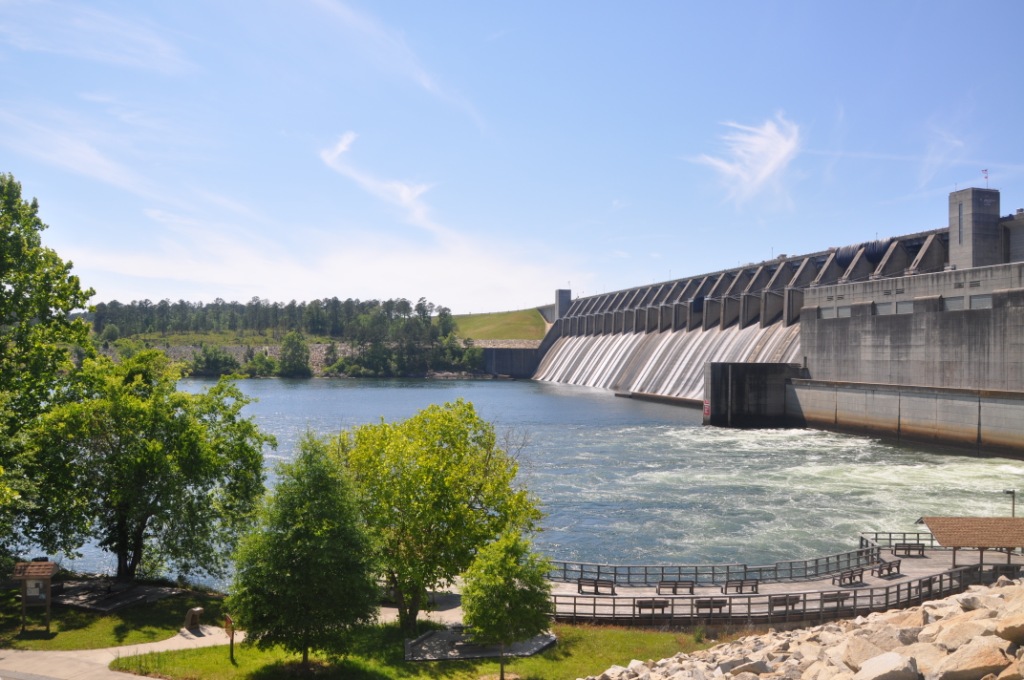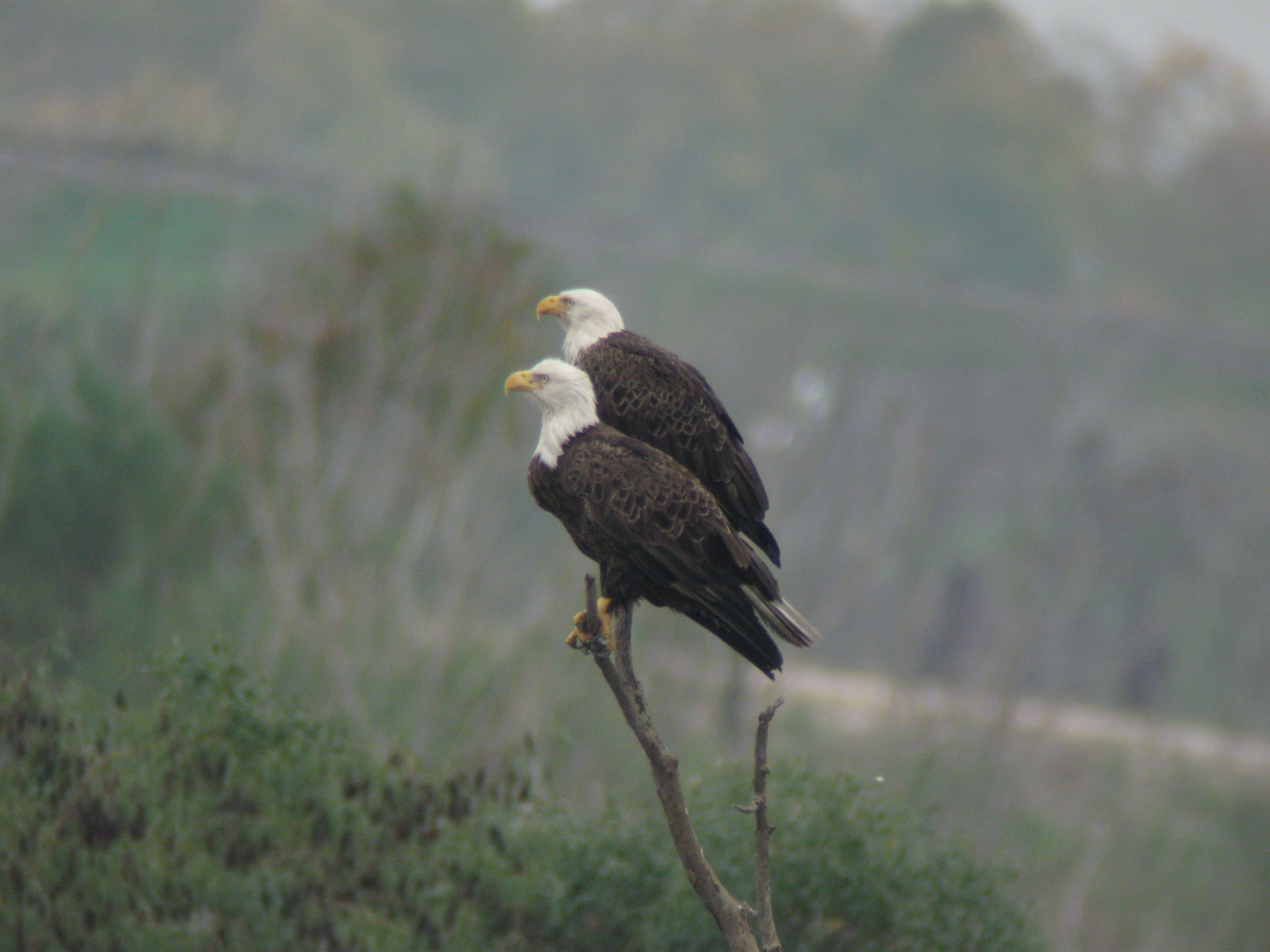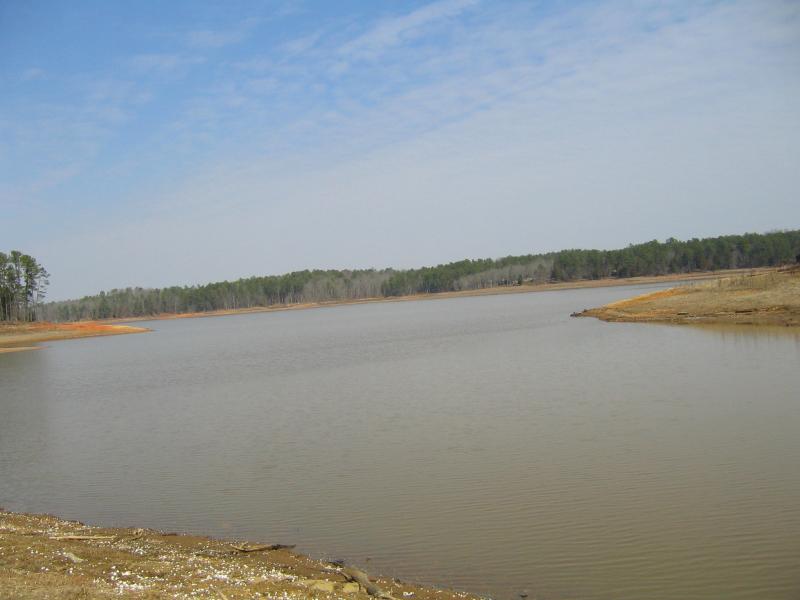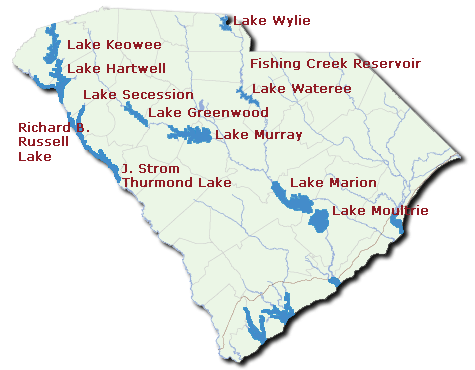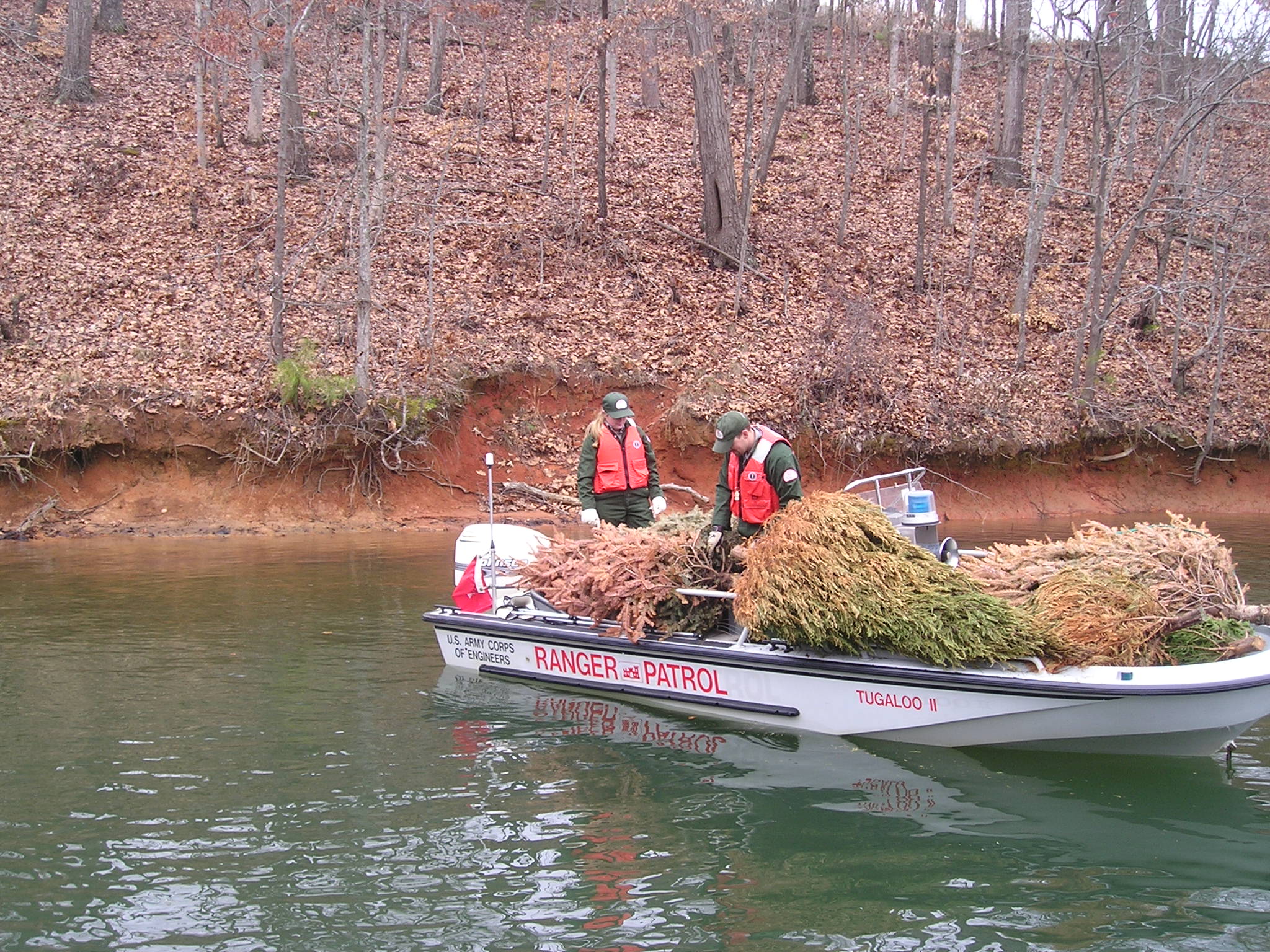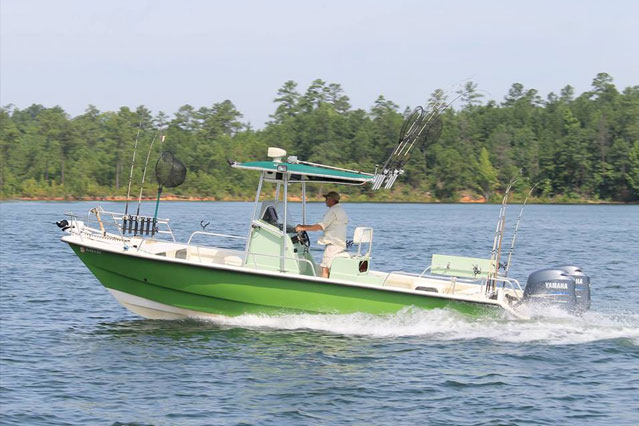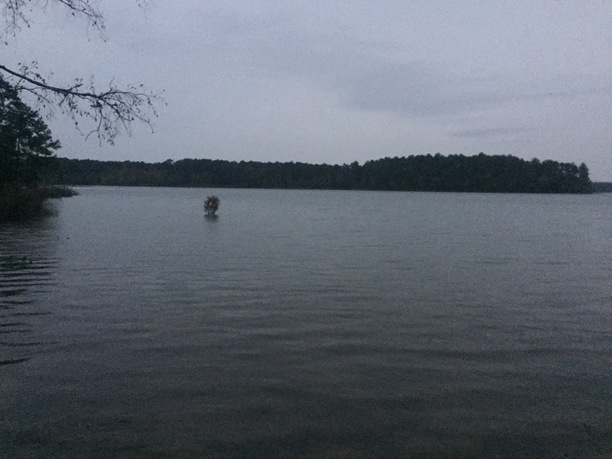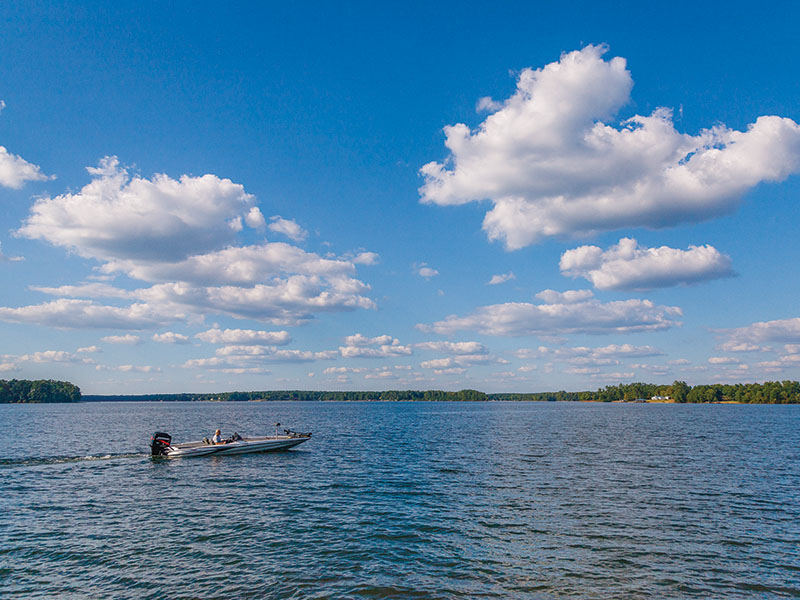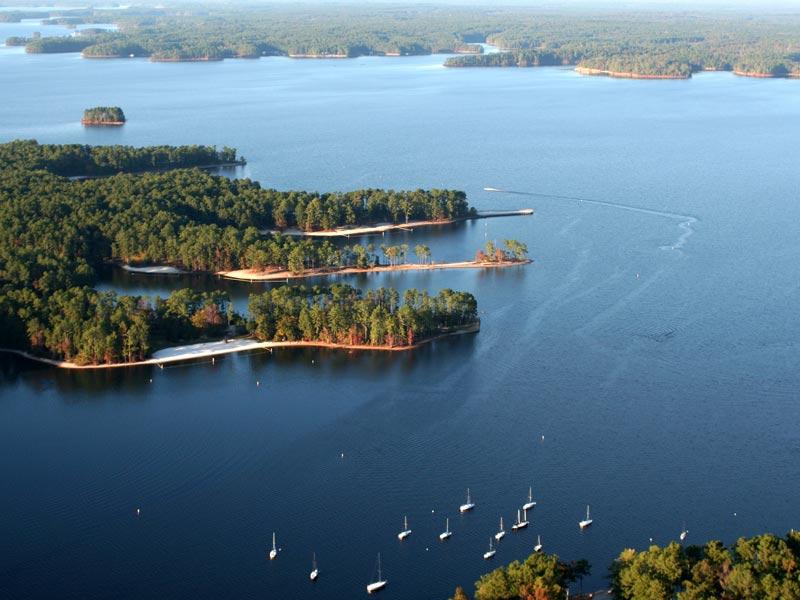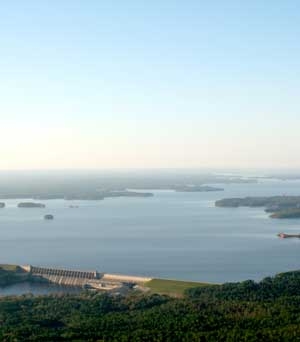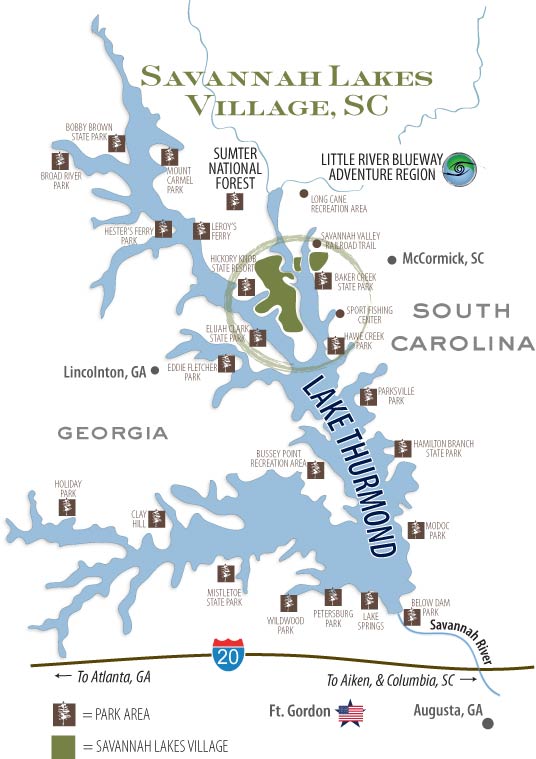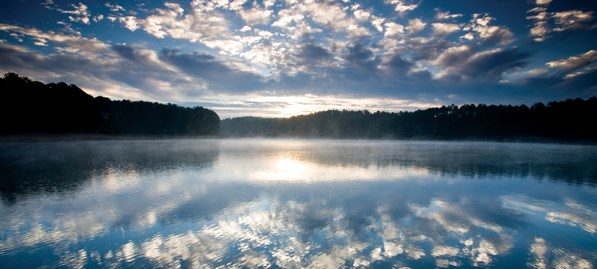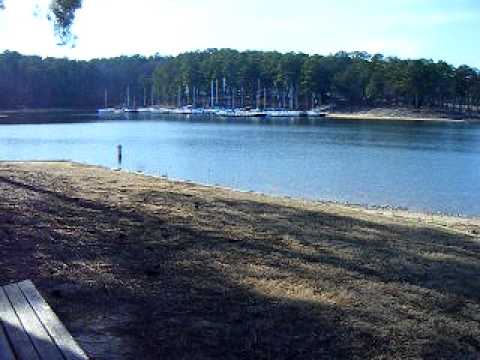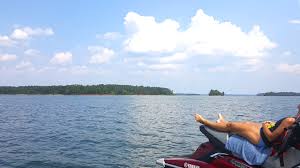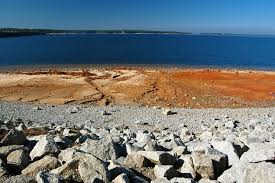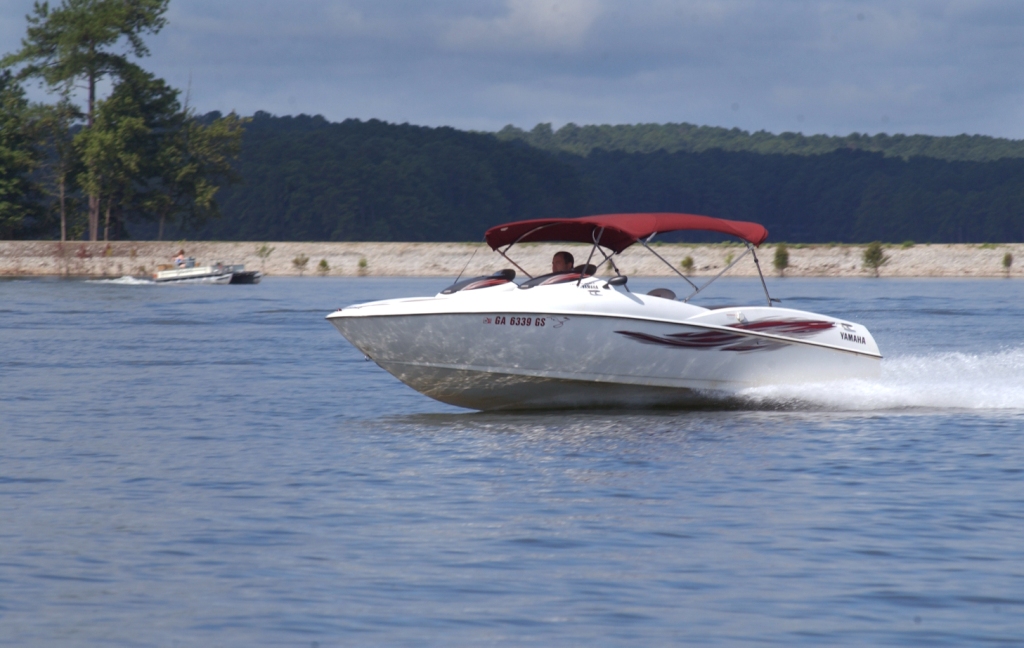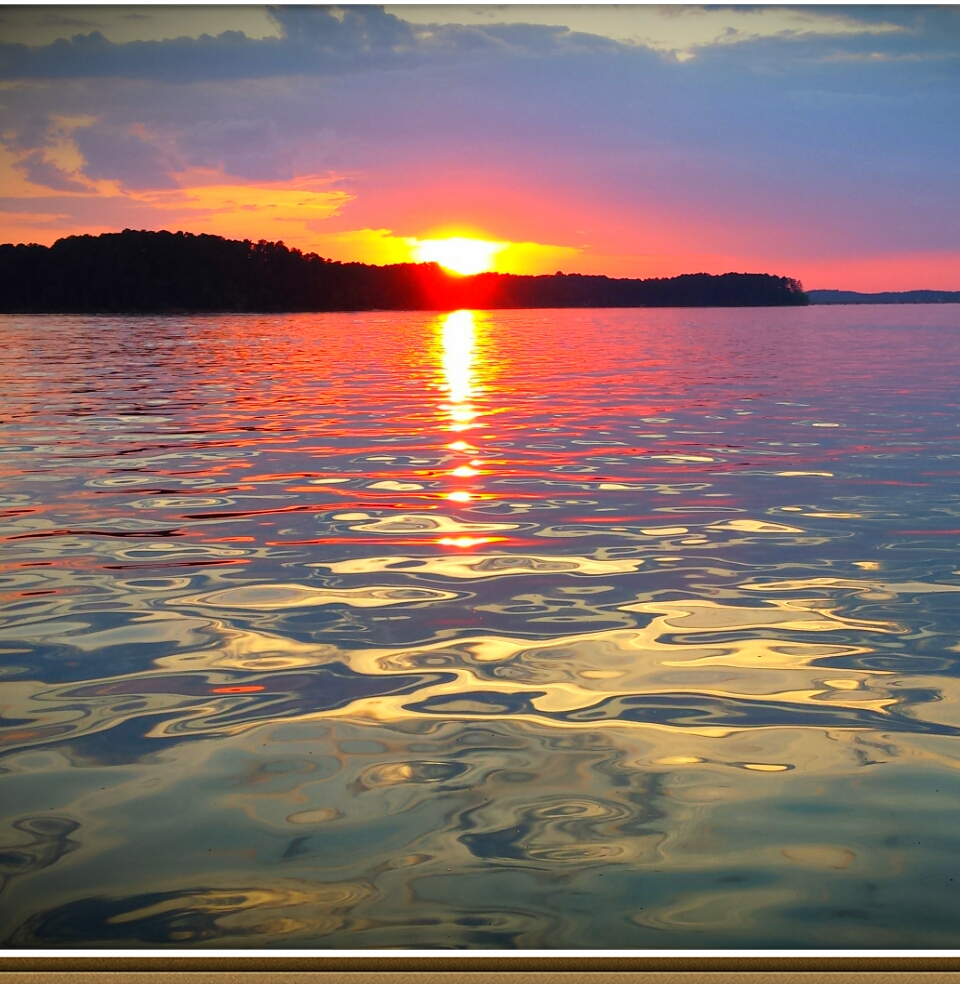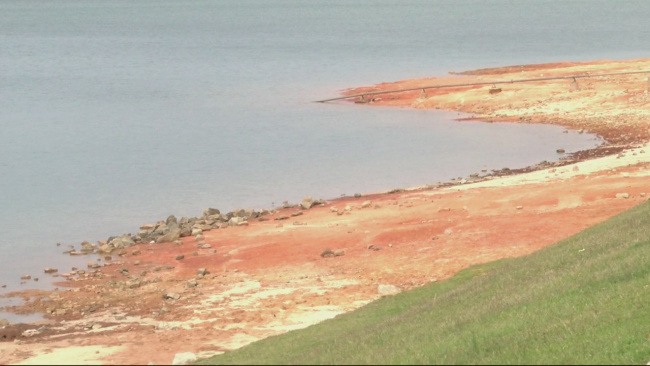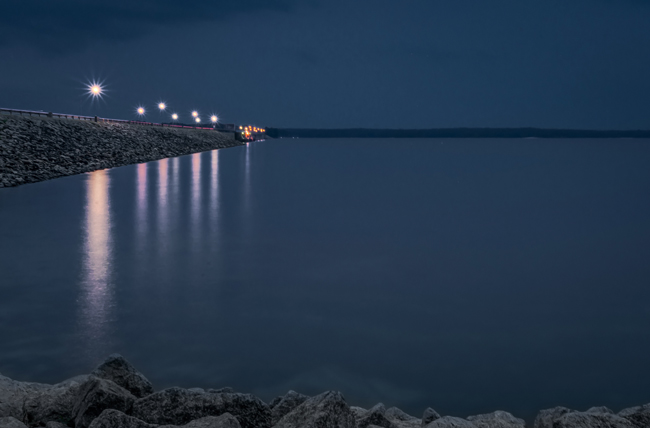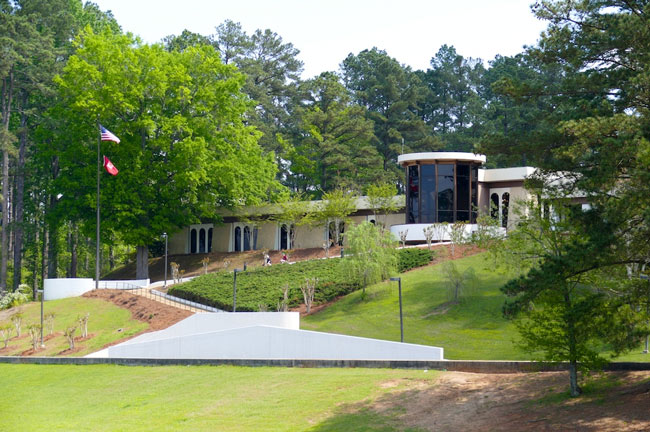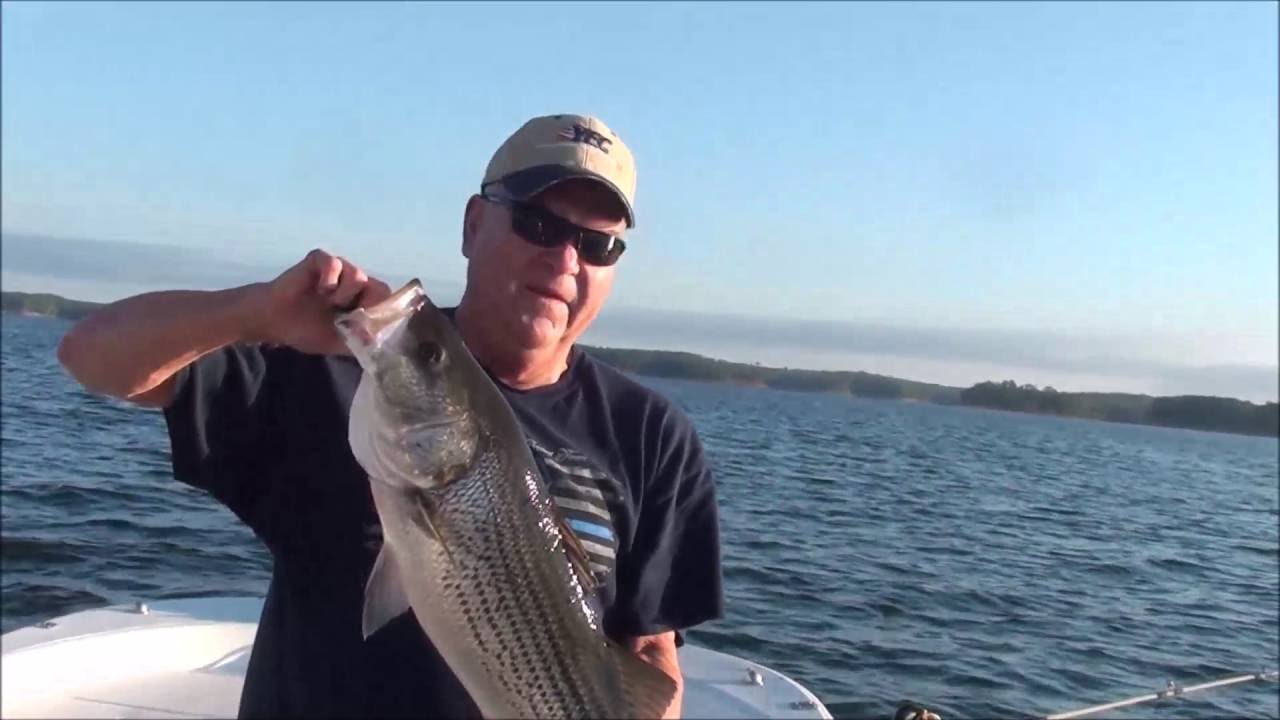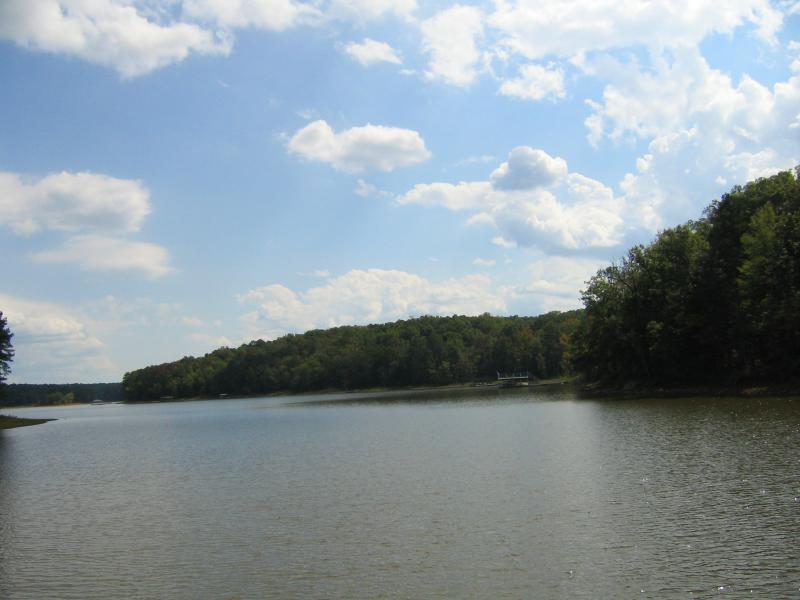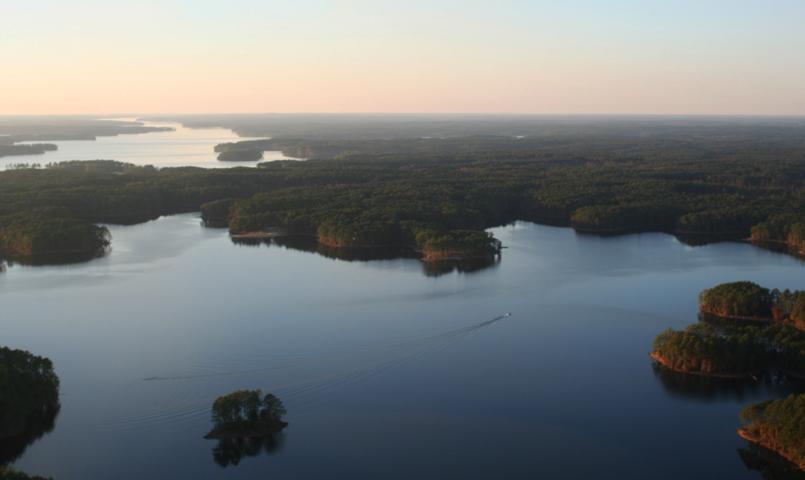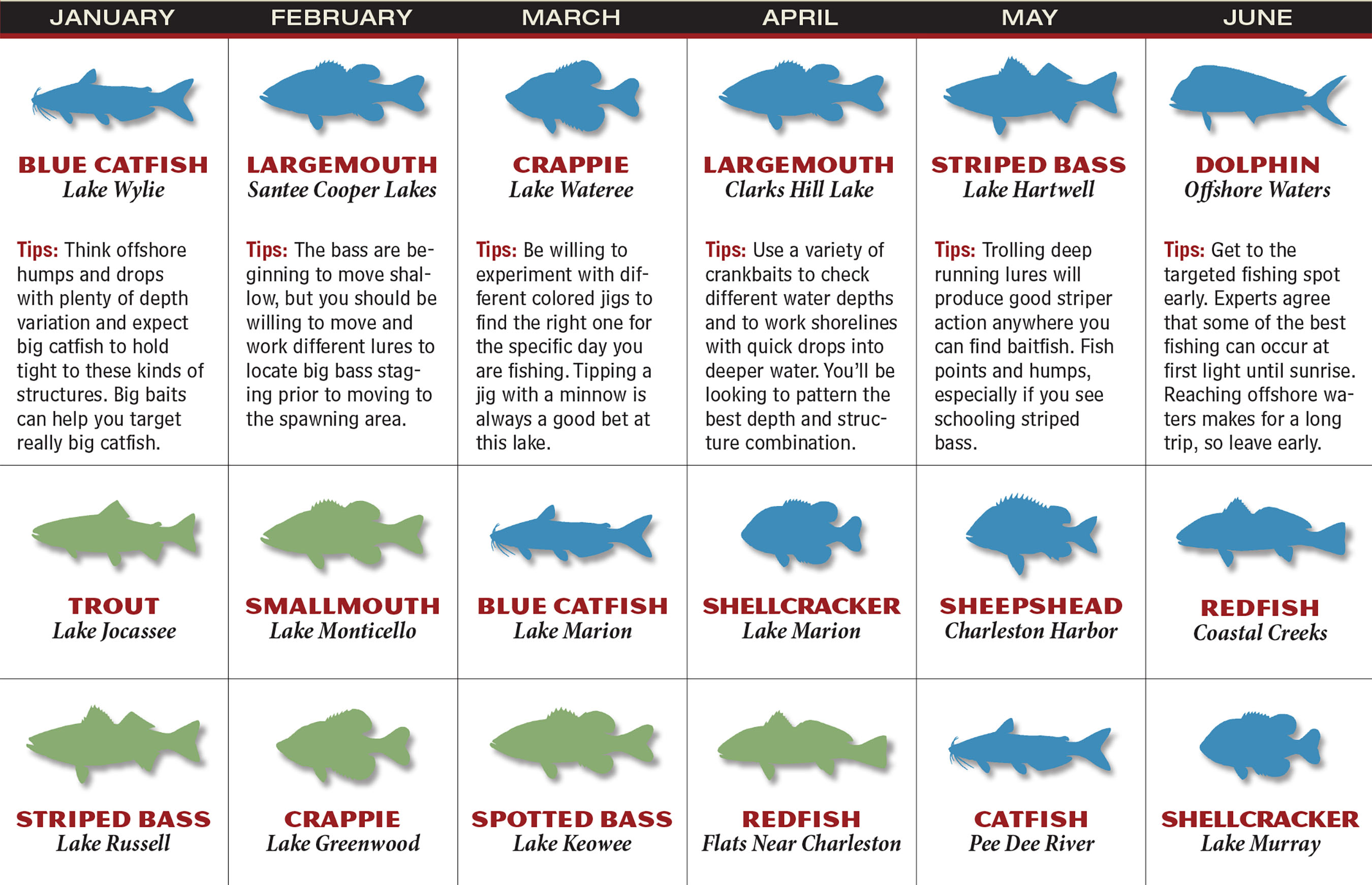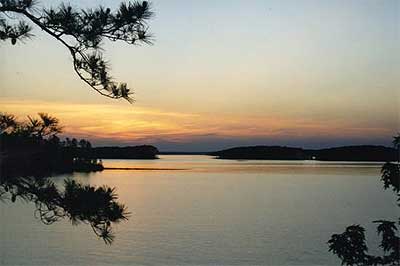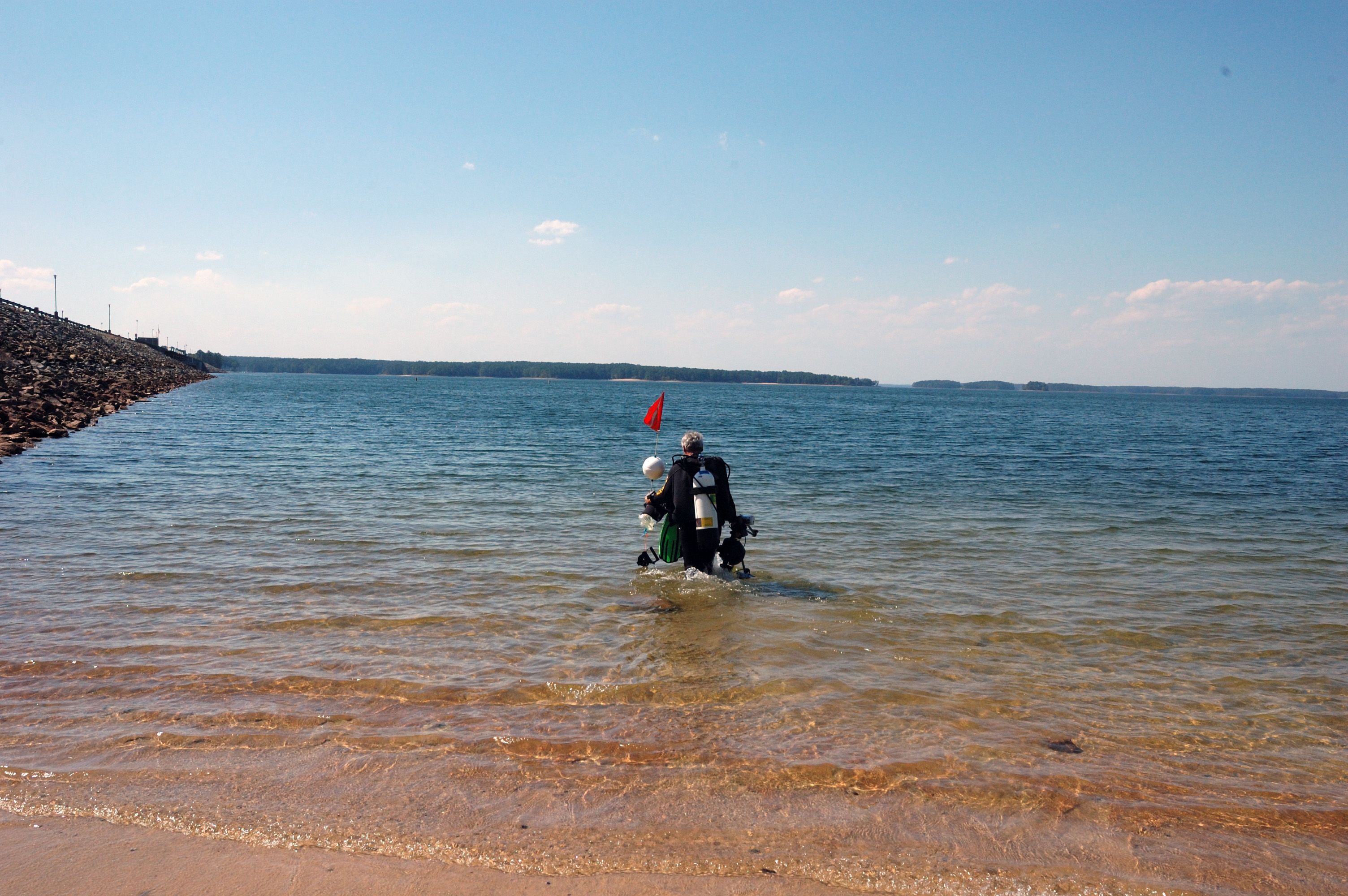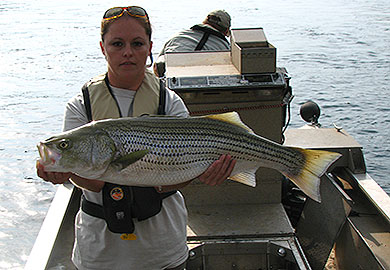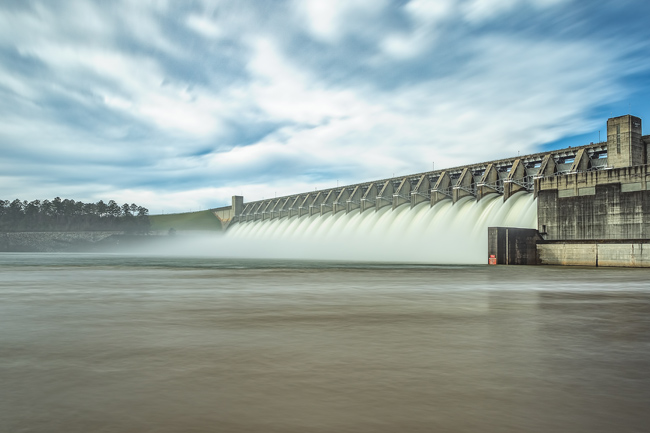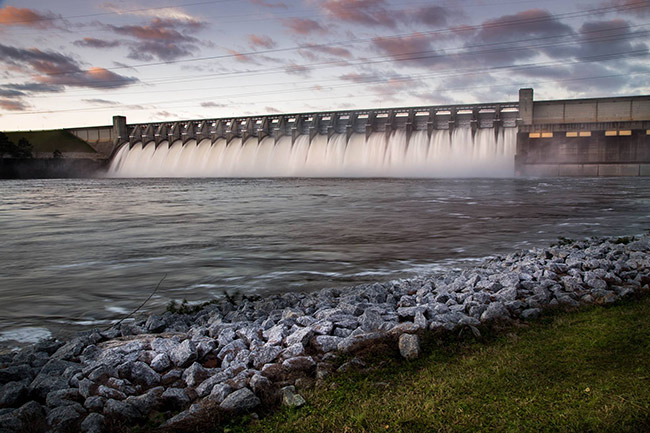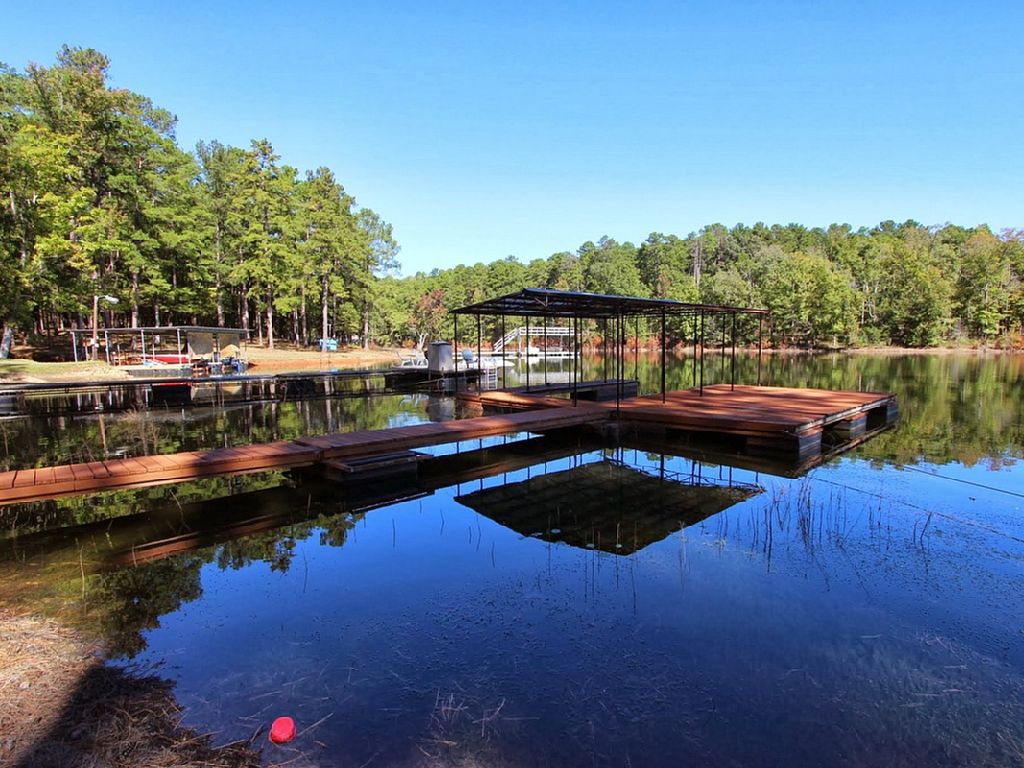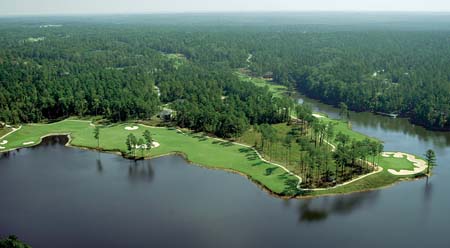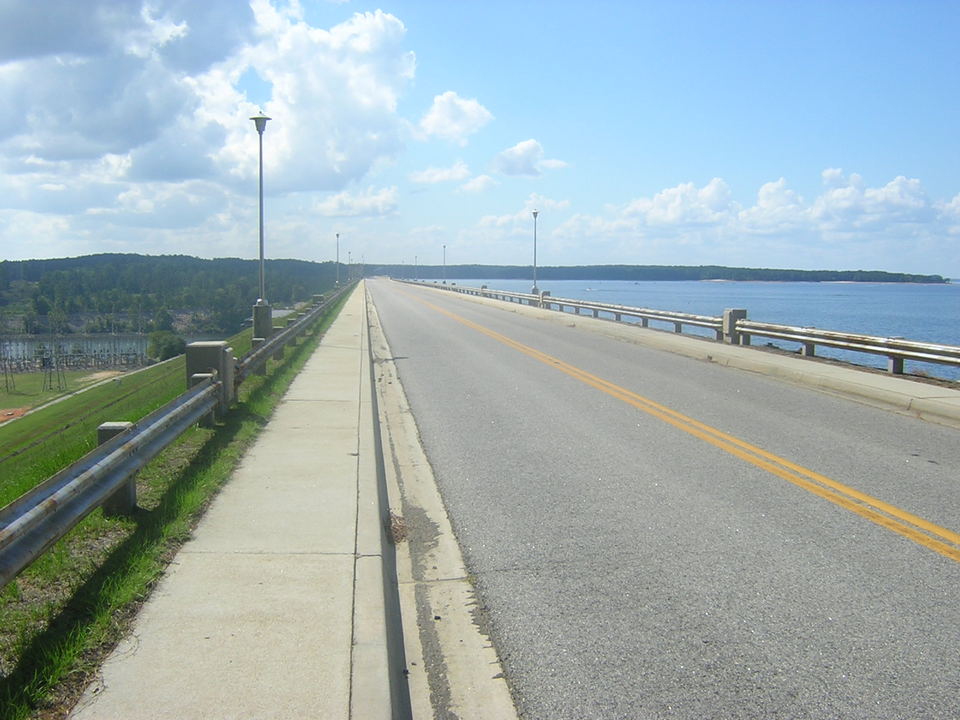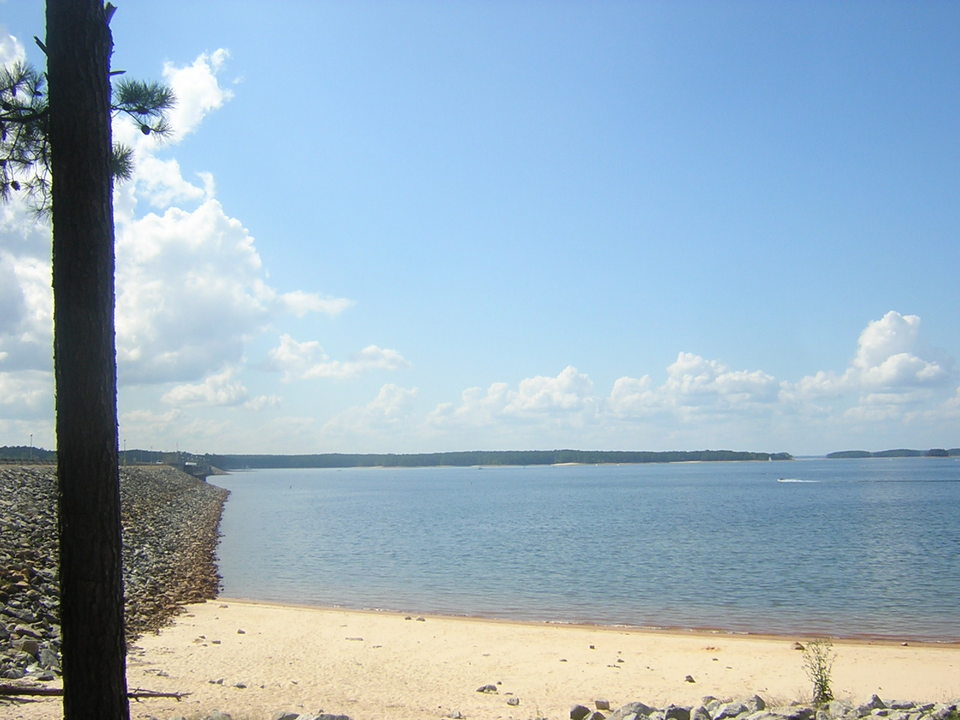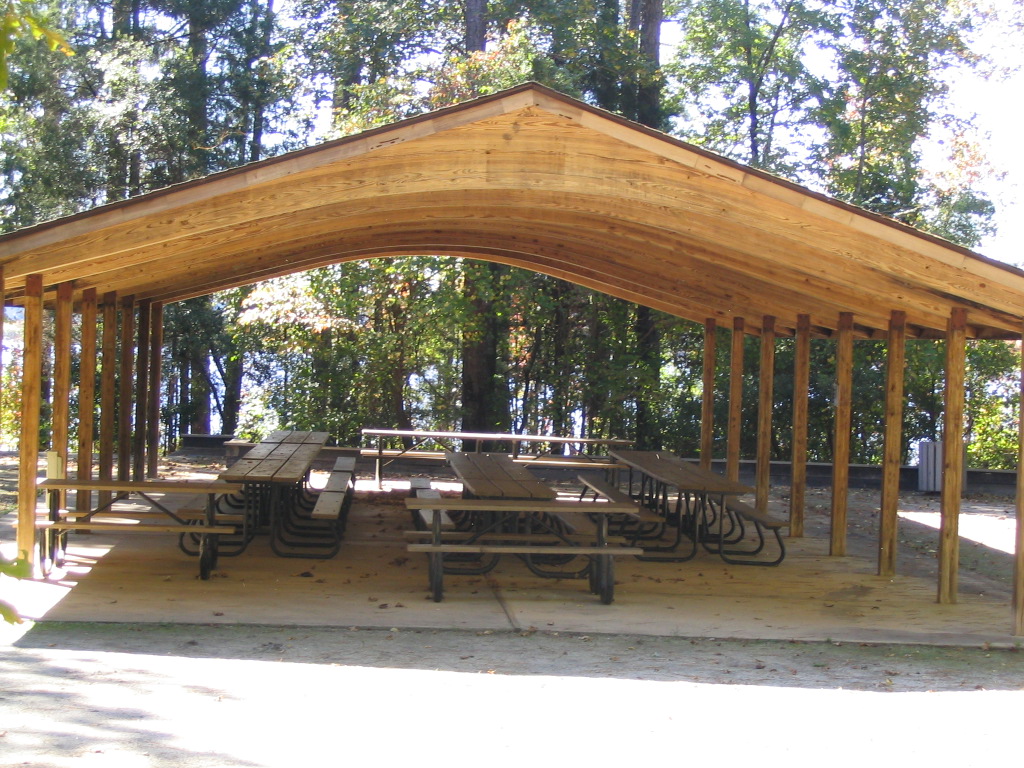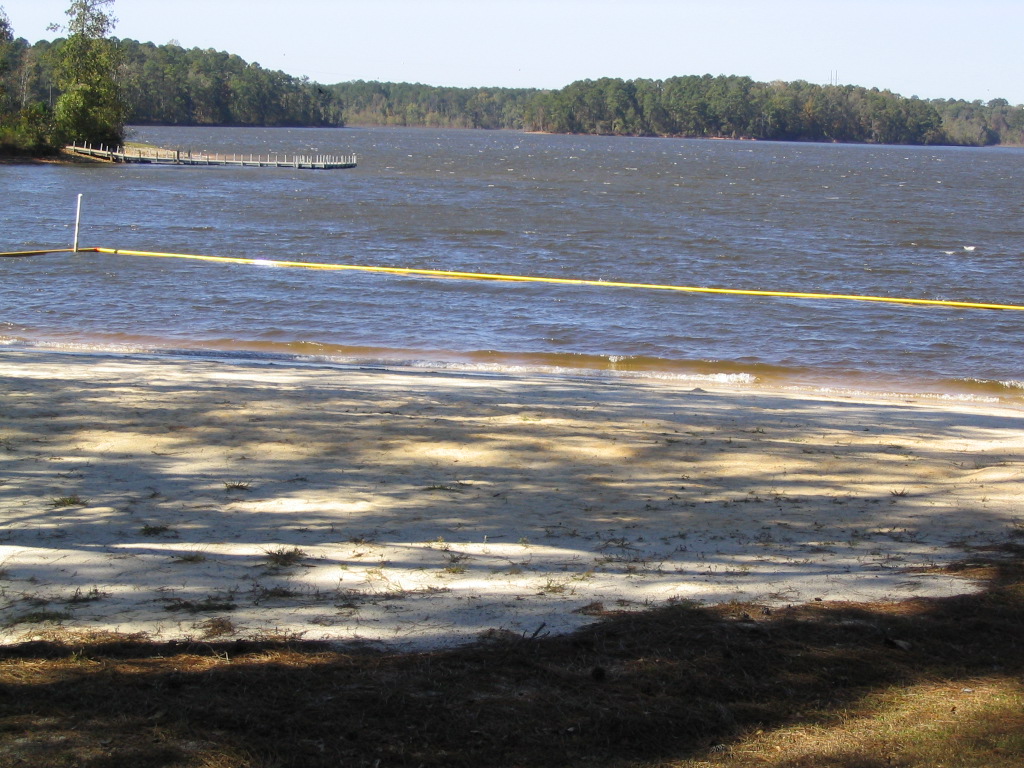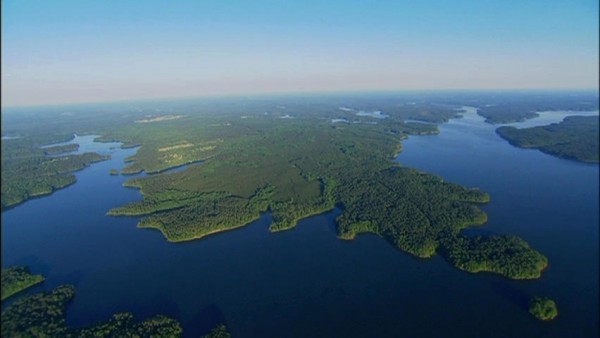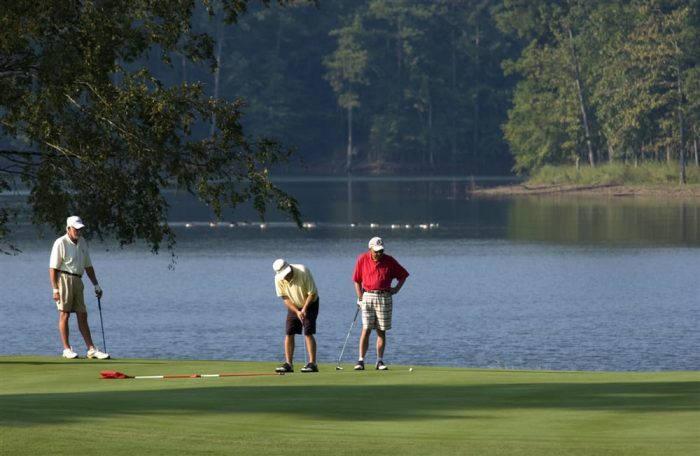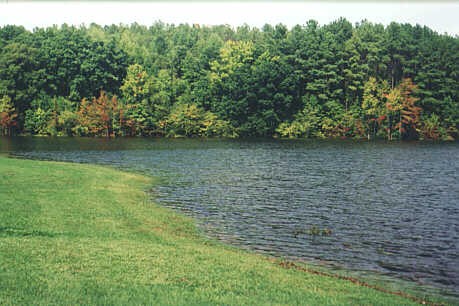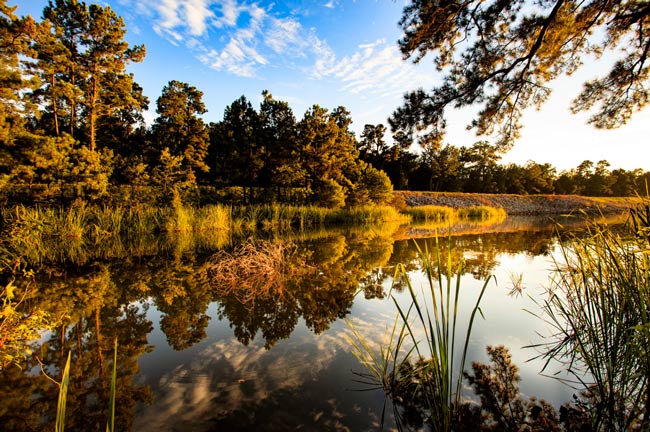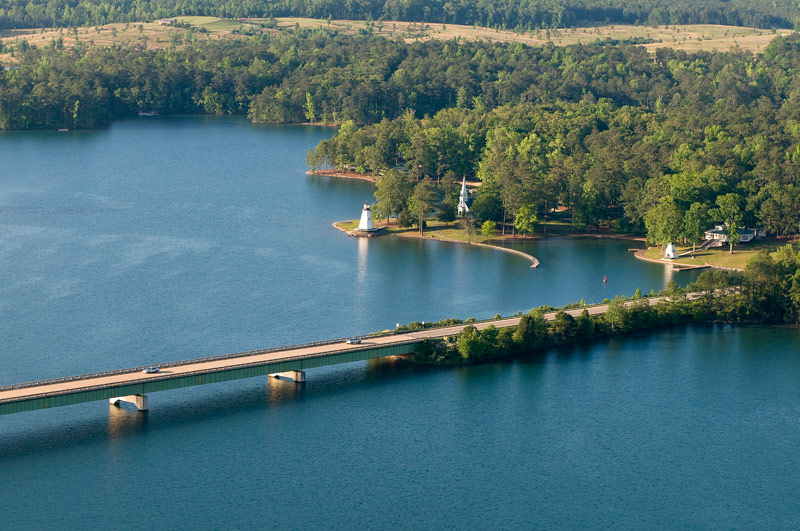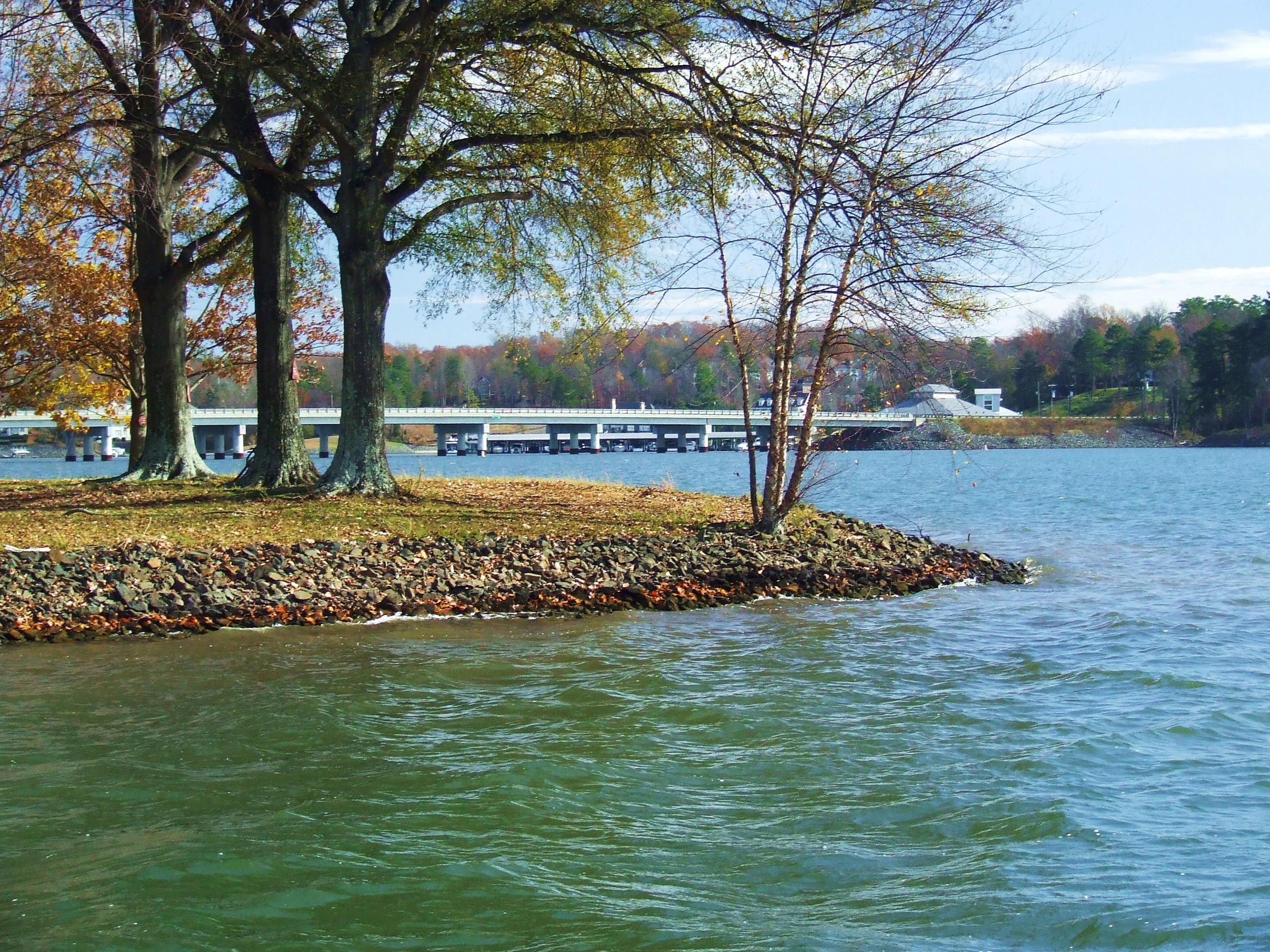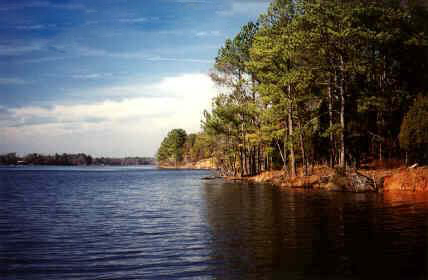Lake Thurmond (also known as Clarks Hill Reservoir) was built by the U.S. Army Corps of Engineers in 1954 for flood prevention and hydroelectric power. This lake dwarfs most other lakes in South Carolina with the exception of the Santee Cooper Lakes.
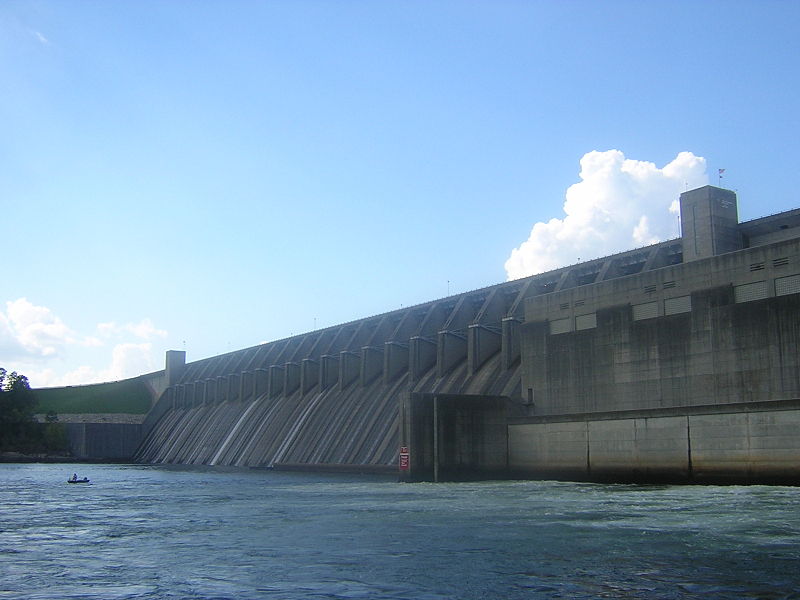
About Lake Thurmond / Clarks Hill Reservoir
Lake Thurmond is the third lake in a chain of lakes built by the U.S. Corps of Engineers on the Savannah River near North Augusta, SC and Augusta Georgia. All three of these lakes, Thurmond (70,000 acres), Hartwell (56,000 acres), and Russell (26,450 acres) all sit on the western South Carolina border between Georgia.
Just like the other Savannah River lakes, Lake Thurmond has more than enough public access areas to accommodate all those who want to visit. Consequently, there are three state parks located on the South Carolina side and several on the Georgia side.
Most of the shoreline is undeveloped with a view of wilderness in any direction you look. Sometimes you can see deer, hawks, beavers, and once in a while a bald eagle. The surrounding pine forest and red clay banks are only broken by the occasional boat ramp area or campsites.



Specifications
- Major Highway Access 221 * 28 * 81
- Size 70,000 Acresh 39 Miles
- Full Pool Elevation 330 Feet Above MSL
- Shoreline 1,200 Miles
- Dam Height 200
- Dam Length 5,680 Feet
- Turbine Generators 7
- Dam Completion 1954
- Project Management U.S. Army Corps of Engineers
- Maximum Depth 141.9 (SCDHEC)
- Mean Depth 37 Feet (SCDHEC)
Fish Species
- Crappie
- Bream
- Largemouth Bass
- Hybrid Bass
- Striped Bass
Video! Flood Gates Opening at Clark Hill Dam
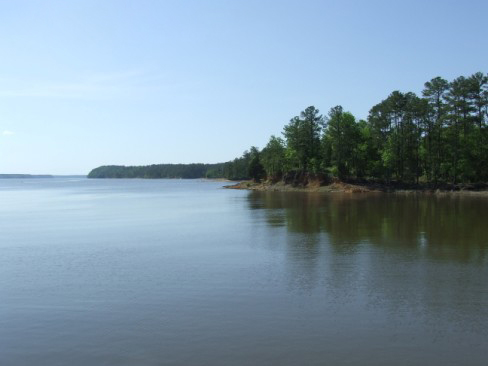
A Clark’s Hill Story
(Originally published in 2009)
What I enjoy doing is fishing and boating on the lakes in South Carolina. Consequently, I have spent many years of my life doing just that. So with twenty eight years of experience on the waters of South Carolina, I have decided to share one of my adventures with you.
This particular story is about a terrifying trip that my fishing buddy Shawn and I took on a very cold and windy day back in February 1997 on Lake Thurmond. At that time, Lake Thurmond, a border lake of South Carolina and Georgia, was called “Clark’s Hill Reservoir.” I remember the story well because sheer terror makes a deep impression on the mind that time can’t easily erase. So here is what happened on that trip.
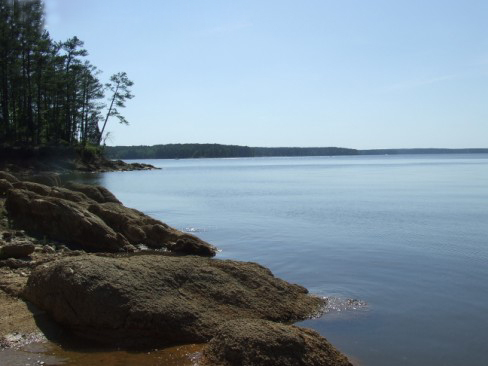
Enormous problem
First of all, we got to the lake at sunrise with the air temperature in the 30’s. It was pretty cold, but we were dressed well for the cold weather. We put the boat in at Parksville Recreation Area on the South Carolina side of the lake and took off toward the Georgia side where there were some good fishing holes. We traveled maybe two miles or a little less and started fishing. As we fished a few hours, we noticed the wind speed steadily increasing, but we kept on fishing thinking the wind was not going to be a bad problem. We were entirely wrong about the situation. The wind was an enormous problem because of the small boat we were traveling in.
The boat
The boat we were fishing in was a 15 foot aluminum bass boat with a small 25 horsepower outboard motor. The hull of the boat is designed as a flat bottom boat with only 18 inches of depth. So, as you can see, this boat is not designed for the type of environment we were going to be traveling in.
The wind
The wind picked up to around 25 to 30 mph causing waves so large I thought we would turn over. I estimate the waves got as high as 3 to 4 feet. I know those size waves don’t sound dangerous, but they were very dangerous for my little boat. Each time we hit a wave head on it sounded like a ball bat hitting the hull. Next, we would get hit in the face with freezing cold water spraying from the busted wave. We were quickly turning into human popsicles bobbing up and down in an ocean like lake.
Zigzag pattern across the lake
Even though Shawn and I were wearing our life preservers and we both can swim, we were certifiably terrified. Consequently, with the dead of winter here, hypothermia was a definite threat if we fell in the water. We had traveled too far out to swim back to land with the water so cold. Luckily, Shawn had been in the Navy and he suggested we do a zigzag pattern across the lake. This strategy actually worked. Of course, with every wave we crossed we could still taste fear.
Changing direction
The water we were crossing was like a 4 foot hill with an immediate 4 foot deep hole which repeated over and over. While running the zigzag pattern we had to change direction to keep our course to the boat ramp. It was these direction changes which terrified us the most. Changing direction would force us to hit waves head on until the maneuver was completed. Hitting a wave head on was really bad, but hitting a wave completely sideways was much worse. The best thing for us to do was hit the waves at angles.
This change of direction reduced the massive hit on the stern of the boat which happens when hitting a wave head on. We also found out the hard way not to cut back too far on the throttle. If the engine looses power all control of the boat is gone and the waves can hit the boat from the side which could overturn it. Once we got near the shoreline, the waves were much smaller in size, and we could go a little faster to the boat ramp.
Conclusion
To conclude this tale of horror, we finally made it to the boat ramp and wrestled the boat on the trailer. We got the heck out of there shaking in our shoes and vowing never to do such a crazy thing again. With twenty eight years of boating experience under my belt, this trip was the only one that I had the fear of dying consuming my mind.
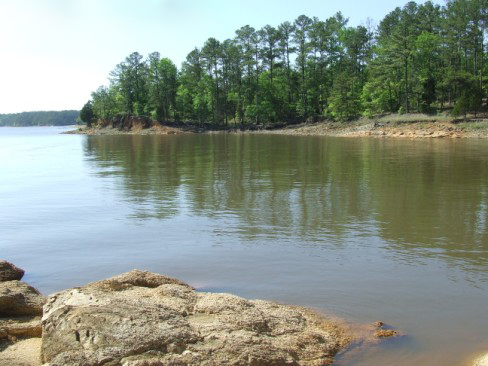
Location
Lake Thurmond / Clarks Hill Reservoir on google maps
Official Lake Thurmond Website – US Army Corps of Engineers
A complete history of the building of this lake can be found on the US Army Corps website.

